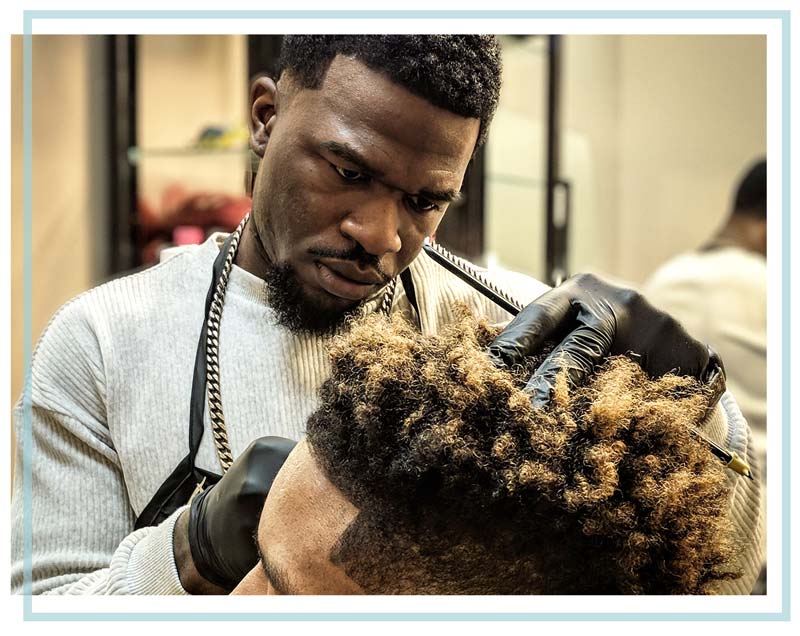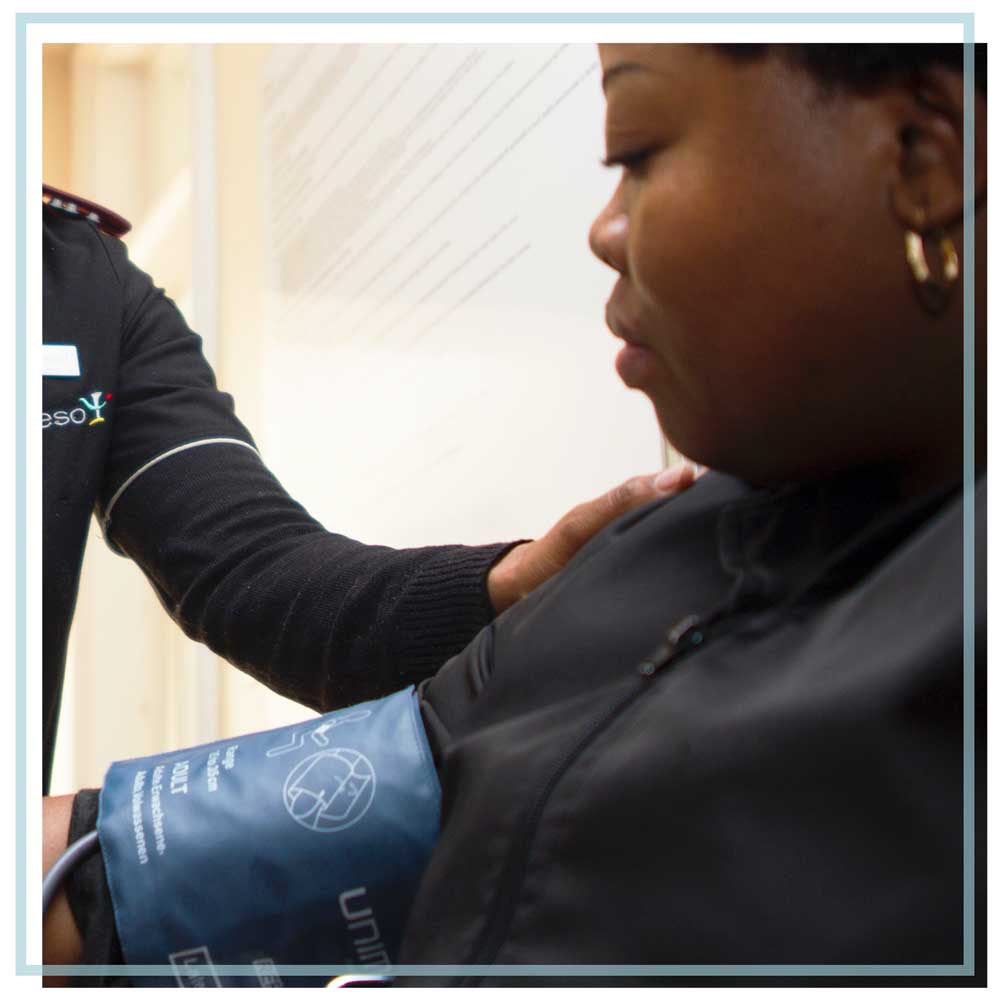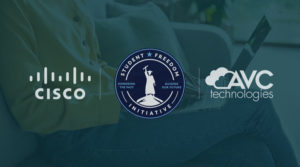The 2% Solution: Driving Action for Real Change
The 2% Solution grew from the idea that lasting, generational change is possible only through a major investment in economic justice for Black and other communities that lack access to opportunities.

The 2% Solution builds from the tradition of household giving. American families, on average, allocate 2% of their income to charity. The 2% Solution asks U.S. companies to do the same by investing 2% of their profits over the next 10 years into communities that have been systematically held back by the racial wealth gap. These are not acts of charity but investments with real, tangible areas of focus, including Black healthcare, education, infrastructure and finance.
“The problems of racial injustice and economic injustice cannot be solved without a radical redistribution of political and economic power.”
- Dr. Martin Luther King, Jr.
The Groundbreaking Idea
The 2% Solution, while encouraging support for underserved communities, is actually an economic catalyst that can change the financial futures of all Americans. A 2019 McKinsey Global Institute analysis found that eliminating the racial wealth gap would generate $1.5 trillion in GDP, and we can use The 2% Solution to help close the racial wealth gap — a gap that continues to widen. In an article citing 2019 data from a report published by the National Bureau of Economic Research, the wealth gap between Black and white families, for example, has grown from under five to one in the 1980s to six to one. Current projections estimate that the gap will reach over eight to one by 2200.

The 2% Solution aims to encourage a comprehensive group of stakeholders across all major sectors to address historical injustices Black and other communities that lack access to opportunities face through a significant infusion of capital into the communities. These stakeholders include representatives of our core pillars of focus, such as the leaders in the healthcare and telecommunications industries, top bank and lending institutions, as well as top governmental programs that would work together with private industries to address issues, such as student loan debt, racial disparities in lending and more. Perhaps, more than ever before, we have an opportunity to galvanize multiple segments of the private and public sectors to address these injustices in a truly distinctive and enduring way.
“I think that [The 2% Solution] will show Americans there is hope, there is an opportunity for the American dream to now be revitalized. And frankly, to give us all confidence that we can actually make this a better country and a better place to live.”
Opportunities for Location-Based Investment
An example of areas where location-based impact could be made are cities with the highest concentration of Black residents. As of 2023, more than 50% of all Black Americans in the U.S. reside in the South, many in just six cities and surrounding communities: Atlanta, GA; Memphis, TN; New Orleans, LA; Birmingham, AL; Houston, TX; and Charlotte, NC. Impactful initiatives in these communities could serve as a replicable starting place for many other cities and communities across the U.S. For example, Southern Communities Initiative, a catalytic program, concentrates its efforts in these areas to accelerate racial equity.

Industry-Based Investment in Communities
By aligning these types of investments to proposed industry partners, the location of the corporation is not a limiting factor. It can include investment that supports the broader Black community and connects those communities to various growth areas, such as:
- Allocate Tier 1 capital for Community Development Financial Institutions (CDFIs) and Minority depository Institutions (MDIs)
- Digitize both lenders and borrowers
- Invest in entrepreneurs and the systems that entrepreneurs need

Location-Based Investment
Location-based organizations are uniquely positioned to pinpoint where investments would best be utilized in their communities. Location-based initiatives would include high-impact projects, such as:
- Providing financial support for K-12 schools in communities that lack access to opportunities
- Delivering broadband access and devices for communities that lack access to opportunities
- Expanding preventative care programs for medical conditions that disproportionately impact communities that lack access to opportunities

Data and Demographics
Data supports major racial gaps in the U.S. The 2% Solution focuses on four main areas where an investment’s impact would be long-lasting and broadly felt within the Black community. These main pillars are:
- Supporting CDFIs and MDIs
- Healthcare
- Education
- Technology and the Digital Divide
Only 53% of Black households are properly banked, compared to 80% of white households.
Only 1.3% of the investment industries’ $69 trillion in assets is owned by private investment firms run by members of groups that lack access to opportunities and women.
There is a $23 billion funding gap of nonwhite school districts vs. white ones, despite having the same number of students.
Black families have more student debt and are more likely to default compared to other ethnicities.
Studies show 36% of Black households have no internet or no broadband, versus only 21% of white households.
Black Americans represent only 6% of all physicians (despite making up 13.5% of the U.S. population) and are underrepresented in every physician specialty.
The Four Pillars of The 2% Solution
Through stakeholder support, The 2% Solution has the ability to make lasting change in Black communities with a focus on four main pillars of action. These main areas are not only where the racial divide is most keenly felt but are also areas where stakeholder corporations already have a vested interest. As it has been noted before, The 2% Solution is not about charity but is instead a direct investment in location-based and solutions-based areas of need in the Black community.
Supporting CDFIs & MDIs
Business support, such as government support programs like PPP loans, are designed to pass through banks to reach small businesses. But, in Black communities, a disparity of major financial institutions has created a banking desert. CDFIs can be the primary vehicle to infuse capital into Black businesses and Black communities. Since 1973, CDFIs have been bringing opportunities to low-income, low-wealth communities left behind by mainstream finance.
A three-part plan for supporting these community financial institutions includes:
- Investing capital in MDIs and CDFIs
- Modernizing their systems, so they can more effectively deploy that capital
- Enhancing their human resources, including through mentorships and partnerships with larger banks
Education
Undoing systemic challenges in education will require investment in four areas: local school district “adoption” to provide mentorships and support of critical programs, a fund set aside for the support of Black communities to provide wrap-around services to strengthen learning ecosystems, long-term financial support of HBCUs and keystone institutions of higher learning for the community through infrastructure and scholarship funding and, an endowment for perpetual financing for higher education for Black students to reduce the rising burden of student loan debt.
Technology and the Digital Divide
To begin to dismantle the digital divide in Black communities, there are several key areas of focus. Local communities could be lifted through investments, such as ISPs funding broadband subscriptions in extremely disconnected communities, through low-cost subscriptions. Computers or laptop devices via loaner programs or at discounted rates to families can be provided through sponsorship of communities. Companies can sponsor STEM programs and internships, like data science boot camps and in-school programs, for aspiring STEM students. Incubators to inspire Black inventors and scientists can be funded to provide not only education but also personal support along with a network to connect and inspire ideas.
Healthcare
Black communities are often medically underserved, and Black patients suffer from decades of removal of services from their communities. To undo these existing problems, The 2% Solution focuses on healthcare as a main tenet. Stakeholders can invest in health clinics and community health outreach in neighborhoods that lack access to opportunities to address needs in healthcare deserts. We can incentivize the increase of services by a diverse group of healthcare providers in communities that traditionally lack access to opportunities by requiring rotations into those areas. Stakeholders, such as biotech and pharmaceutical companies, can fund research for better treatment of rare and prevalent diseases that typically affect the Black community, including prostate cancer, breast cancer, sickle cell disease and other under-researched diseases.
Praise for The 2% Solution
The 2% Solution Stakeholders
The 2% Solution works because of the commitments made by a growing list of corporate and government stakeholders. These partners span across many of the U.S.’s top industries, from financial services, telecommunications, healthcare and professional sports to education, technology and even media and entertainment.















